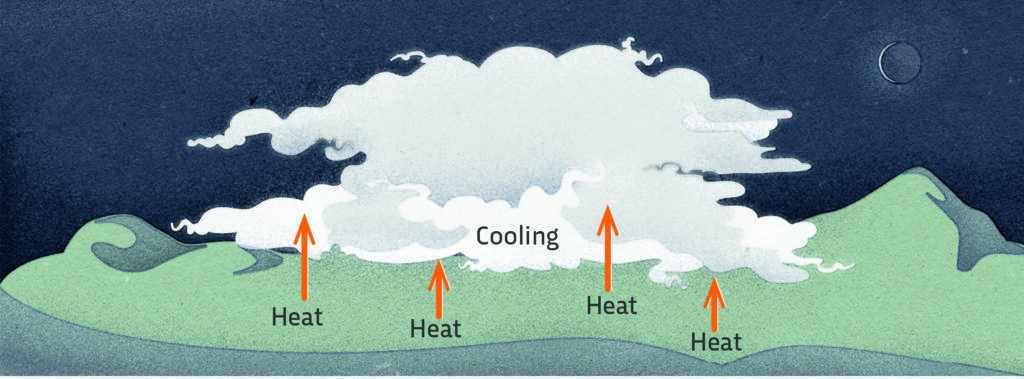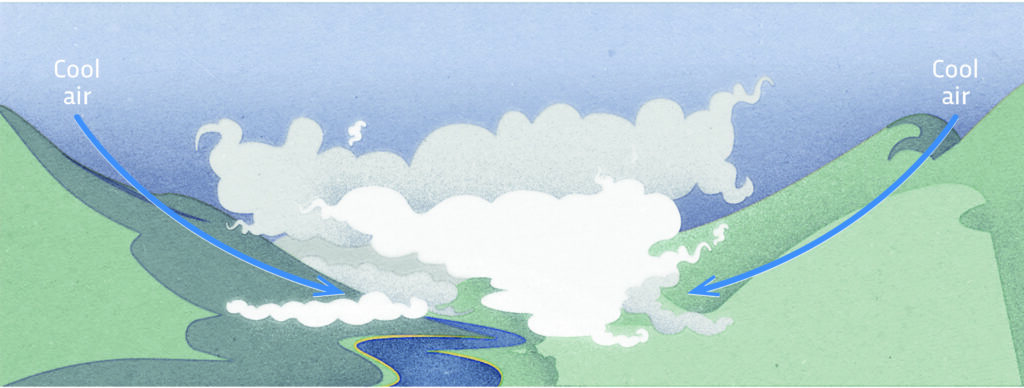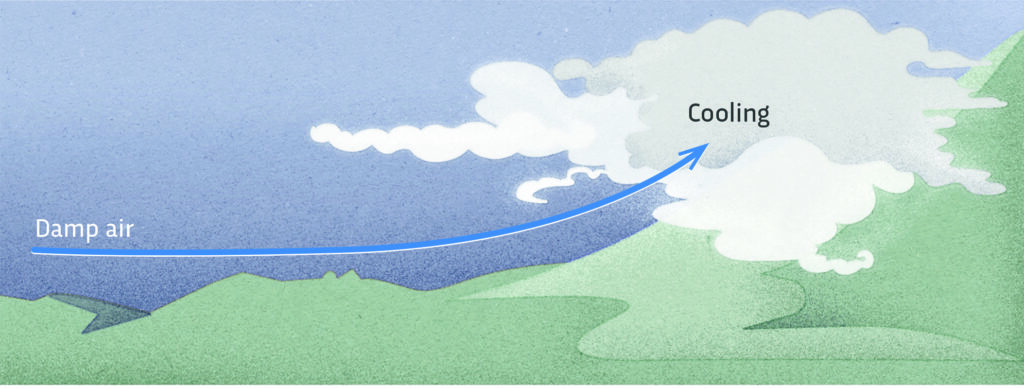How is fog formed?
KAYLEIGH SUMMERS, DORSET
Fog consists of molecules of water vapour, suspended in the air as tiny droplets of water close to the surface of the Earth. It occurs when air saturated with water vapour is cooled suddenly, and there are several different ways this can happen.

Radiation fog forms over land on calm, clear nights when heat absorbed by the Earth’s surface during the day is radiated into the air. As the heat escapes upwards, air close to the surface is cooled until it reaches saturation. Cold air holds less water vapour than warm air, and the water vapour condenses into fog. Radiation fog will usually ‘burn off’ as the ground begins to warm again, but during winter months it can persist all day.

Valley fog usually forms in the lowest parts of a valley as cold, dense air settles and condenses, forming fog. It’s confined by local topography, such as hills or mountains, and can persist for several days.

Advection fog forms when horizontal winds push warm, moist air over a cool surface, where it condenses into fog. It’s common at sea, where warm, tropical air moves over cooler water. Advection fog can cover wide areas, and the Golden Gate Bridge in San Francisco Bay is often shrouded in advection fog.

Upslope fog forms when wind blows moist air up a slope, hill, or mountain, which cools as it rises. As it cools, the moisture condenses, and fog is formed as it continues to drift up the slope.

Evaporation fog forms as cold air passes over moist land, or warm water. When the warmer water evaporates into the low bands of air, it warms the air and causes it to rise. As this warm, moist air rises, it mixes with the colder air until its humidity reaches 100 per cent, and fog is formed.
Email your questions to
questions@sciencefocus.com
or submit on Twitter
@sciencefocus
IMAGE: GETTY IMAGES